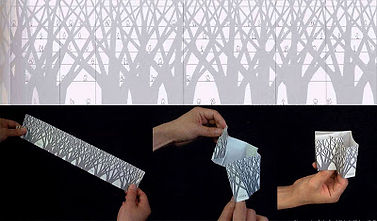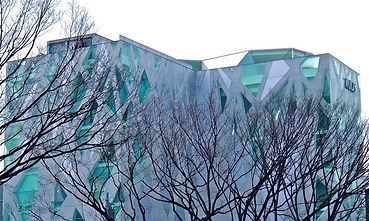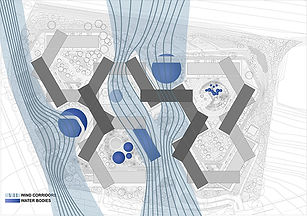
THEORIES OF ARCHITECTURE DESIGN
Technology may have a significant influence on how modern architecture has become. However, apart from making a “futuristic” design for a house or a building, integration of the design concept using nature as an inspiration still exist. The importance of role of nature in architecture is undeniable. Architecture has always related to nature since many years ago. Architecture responds to local conditions such as climate, geology and seismic conditions. Local building materials and their properties are key in the technical design. In my opinion, nature is a design metaphor and a set of physical to overcome.
“It is the same in architecture as in all other arts: its principles are founded on simple nature.”
-Marc-Antoine Laugier
The Interlace | Ole Scheeren
The site completes a green belt that stretches between Kent Ridge, Telok Blangah Hill and Mount Faber Parks. The Interlace explores a dramatically different approach to tropical living: an expansive interconnected network of living and communal spaces integrated with the natural environment. Thirty-one apartment blocks, each six-stories tall and identical in length, are stacked in a hexagonal arrangement to form eight large-scale open and permeable courtyards. The interlocking blocks form a vertical village with cascading sky gardens and both private and public roof terraces.
Tod’s Omotesando | Toyo Ito

This striking visual quality that is one of the most identifiable characteristics of the project is the façade.The Tod's building, located on Omotesando. Since the site is L-shaped and has a narrow frontage, in order to give the building a unified volume we enclosed the site with a wall that gives the impression of a row of zelkova trees. It is wrapped in a skin of criss-crossed concrete braces and glass that mimics the trees lining the street. His exterior surface serves as both graphic pattern and structural system, and is composed of concrete and flush-mounted frameless glass. Light enters the building through the clear glass that fills the gaps between the concrete braces on the north side frontal facade. Opaque glass towards the south, facing rows of low private houses, brings additional daylight into the building. The idea of using a structure composed of overlapping tree silhouettes was conceived. Trees are organisms that stand by themselves, and therefore their shape has an inherent structural rationality. The pattern of overlapped tree silhouettes also generates rational flows of force. Having adapted the branched tree diagram, as you move higher up the building, the thinner and more numerous the branches become, with a higher ratio of openings. Thus, the building unfolds as interior spaces with slightly different atmospheres relating to the various intended uses. The tree silhouette creates a new image, with a constant tension generated between the building’s symbolic concreteness and its abstractness.



The design capitalizes on the generous size of the site and further maximizes the presence of nature by introducing extensive roof gardens, landscaped sky terraces and cascading balconies. The Interlace incorporates sustainability features through careful environmental analysis of sun, wind, and micro-climate conditions on site and the integration of low-impact passive energy strategies. In the tropics, the sun is the most important thing to pay to, and in fact, it is seeking protection from the sun. They look into the intricate nature of the self shading of this complex to bring sufficient sunlight to all apartments. Based on that, by optimizing the glazing of the facades to minimize the energy consumption. But most importantly, the geometry of the building design would provide sufficient shading to the courtyard. Water bodies were further placed along the prevailing wind corridors, so that evaporative cooling would create microclimates. The Interlace, reinforces the interconnectivity of the community with the surrounding natural environment.




In nutshell, I do believe that the role of nature today is not just as a metaphor, or physical factors to overcome, but combination of these. Nature inspired us in architecture in form, shapes, or material. Nature is also one of the sub-element of context, that is should be considered as an important issue in designing. Green is seen as an essential part of architectural context. Most of the architect today is disregarding the natural environment that already exists as part of the site but they choose to clear the site. I think architecture and nature should be as one.